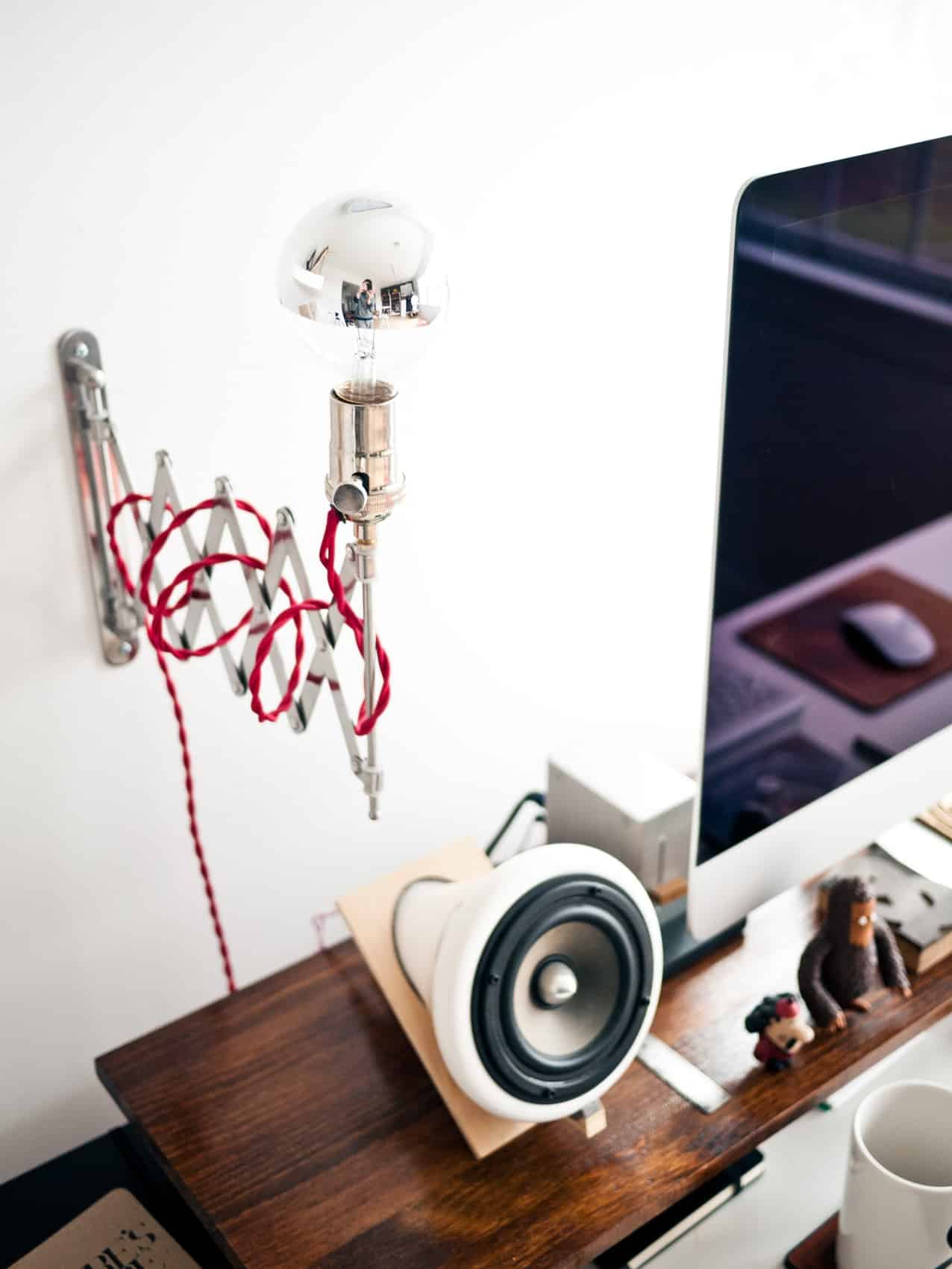One thing that perhaps changed the way we communicate, was the telephone. Invented by Alexander Graham Bell, it truly revolutionized the human era forever. But even behind this wonderful invention, were the barely noticeable speakers. Which is why, it is perhaps wise and correct to say, that the modern day telephones wouldn’t be a possibility without the modern day speakers.
We humans have always been intrigued by sounds. During our caveman days, it was the sound of the rattling of leaves that alerted us to the presence of a predator.
It was the thunder from clouds that alerted us to the coming of rain and storm.
Perhaps even more fascinating is the fact that we can record all of those sounds and many, and listen to our heart’s content whenever we desire.
Imagine yourself as someone before the invention of the speakers. How surprised would you have been when you would have first noticed a device that generates sound?
It would be as amusing and surprising as Artificial Intelligence for the humans of today.
Featured Image via Mikael Kristenson@mikael_k
Contents
The Advent of Modern Light-bulb Speakers
What are speakers and how do they work?
Speakers, just like a microphone, work on the principle of Electromagnetic Induction discovered first by Faraday. Basically, a speaker has three or four major components. A voice coil, a permanent magnet, and a diaphragm to produce the sound. This is the most basic design employed in the construction of a speaker.
So whenever a user speaks into the microphone, or an electrical signal from a device like a smartphone or MP3 player is detected, this induces a motion in the voice coils.
The voice coils are usually suspended in a circular shaped gap, between the poles of a permanent magnet. When a voice signal is detected in the coils, it is in the form of an electrical current. This electrical current, makes the coil move rapidly back and forth, thus making the diaphragm move with it too. All of this is based on the law of Electromagnetic Induction. As the diaphragm moves, it forces the air around it to vibrate accordingly, and this we hear as sound of different intensity and pitch. This is precisely why one can hear sounds of all frequency and amplitude if the input current is adjusted so. Of course, the human ear cannot hear anything above 20000 Hz. And then there is the enclosure in which all the systems are kept. The enclosure ensures quality sound reproduction by isolation.
Usually, the box enclosure is made rectangular, and often out of wood. A speaker is not just one unit. Whenever more units are installed in a single box, they are installed so as to produce various frequency of sound independently. In that case, each unit is called a driver.
To capture the entire range of sound, the lower frequency is handled by sub-woofer and woofer. The mid-range frequency is reproduced by mid-range drivers. And the reproduction of higher frequency is the job of tweeters. It is only the combination of these individual drivers, that we call a loudspeaker.

Image via Jeff Sheldon@ugmonk
So where did it all start?
It was in in 1876 that Alexander Graham Bell, before patenting his telephone, patented the first loudspeaker design. This design was capable of producing clear speech tones occasionally riddled with interference and noise. It was also during this time, that Thomas Edison patented a compressed air as a mechanism to amplify sounds for his phonographs. Shortly after understanding its shortcomings, he settled for metal horn based membrane which was attached to a stylus. Soon after in the year of 1898, Horace Short, a British inventor, introduced a loudspeaker design driven by compressed air. He later sold his design to Charles Parson, another inventor and entrepreneur of the British era.But the compressed air driven loudspeakers didn’t last for long. They were inhibited by their poor sound reproduction and inability to produce audible low frequency sounds. They would have never thought that their precious design would not be used in loudspeakers, but it would rather be used to test the space equipment against very loud sound and vibration levels during the launch of rockets.
Well that is a great application of the invention as any.
Approaching the modern induction coil designs
The very first of the moving coil speakers started out as an experiment. A successful one at that. It was Oliver Lodge who invented the first moving coil loudspeaker in 1898. These designs are what forms the backbone of today’s modern speaker systems. They are also called dynamic loudspeakers today. Although Oliver Lodge saw a huge opportunity in his designs, he wasn’t backed by the telephone companies. They saw little promise in the design. It was their thought that the membranes could easily rupture and damage.
How wrong were they!
Although the use of horn to amplify the sound was not welcomed with open arms by telephone companies, Lodge tried his hands on public speaking and address systems. He opened a company to manufacture his designs and named it Magnavox. But in 1924, Chester Rice and Edward Kellog, patented modified moving coil loudspeaker mechanism. Their design was granted a patent in spite of being similar to Lodge’s, because of a key structural difference. Rice and Kellogg made sure that the parameters were so adjusted, that the resonance of the mechanical parts would occur below the frequency of where the cone’s radiation impedance became uniform. In layman’s terms, this meant that the noise created by the resonance of moving parts, would not disturb or interfere with the output of the cone when the output was at its maximum constant state.
Soon this design exploded into view.
Almost all manufactures started tweaking and altering the design to suit their products. Moving coil design required one big sacrifice, manufacturers had to ditch the permanent magnets in favor of electromagnets. It was so chosen because not only were permanent magnets heavy, but they were also quite expensive.
Then in the 1950s, Altec Lansing brought forth their design. It was a duplex driver design, which sent sound through the middle of a 15 inch woofer for a point source like feel.
The ‘Voice of the theater’ model from Lansing arrived later in 1950s. The output of the model was turned up to several notches higher. The Academy of Motion Picture Arts and Sciences even made it the industry standard after testing. Edgar Villchur, in 1954 discovered a new technique altogether. The acoustic suspension principle, was applied by him in his designs, and enabled significantly better bass response back in those decades.

Image via Jeff Sheldon@ugmonk
Going beyond modern
Today technology has made all possible permutations and combinations, possible. This is why we see designs combinations that can at best be called amusing. This has resulted in coming of the flat panel plasma speakers. Plasma speakers employ a coil that charges the plasma around it and influences it electromagnetically. The moving and vibrating plasma produces sound waves. But these type of speakers aren’t too reliable. Their bass is almost non-existent and the speakers offer disturbed sound quality.
The experiments haven’t stopped there.
The modern speakers are being designed with better technique and technology than ever. To improve the parts used, finite element analysis is being used. For better sound reproduction, the membranes for vibration are being repeatedly tested with a variety of materials.
The speakers of today in fact, come enclosed in a wooden box like timbre. This ensures resonance cancellation and avoiding any standing waves of sounds. Because one thing that majorly disturbs sound quality, is interference among many other things. Also, the use of better electromagnets and impedance coils have almost perfected the sound audible from the speakers. It were these experiments regarding what more could be achieved, that resulted in next wave of innovations.
Have you ever thought, that a bulb and a speaker can be combined together? If yes, then you’re right. This marriage wasn’t possible without the birth of the Bluetooth technology, though. The modern bluetooth lightbulb speakers employ the amalgamation of three technologies. The Bluetooth communication, the modern LED and of course the speakers themselves.
This combination isn’t revolutionary in terms of design, as much as it is in terms of an idea. The works quite effectively. The LED bulbs are fitted with a most basic kind of speaker, usually at the base.This does a two fold task. When the bulb is plugged in, the electricity powers the bulb and the speaker at once. And to control either, that is when the Bluetooth comes in.
With an application available on the smartphone, it is fairly easy to control both light and sound. The technology is still in its nascent stages and could use some really fine engineering but they`re becoming more popular each day thanks to their versatility, you can cast a glance over the best Bluetooth light bulb speakers in the industry right here.
Because right now, the speakers and the lighting, both suffer for a lack of a common road to tread on.
[youtube https://www.youtube.com/watch?v=WBOR490pt3w]
To sum up
Speakers can easily be termed as one of the most enchanting inventions on the history of humanity if not the most important.
This made people connect over larger distances. It enabled leaders to spark a revolution and it provided artists with a voice.
The modern speakers, although similar to their 50s cousins, couldn’t be more different in idea and implementation. Who could have imagined that speakers would fit in your ears fifty years ago?
Let’s see what the next stop is. It’s definitely a good time to be alive.
